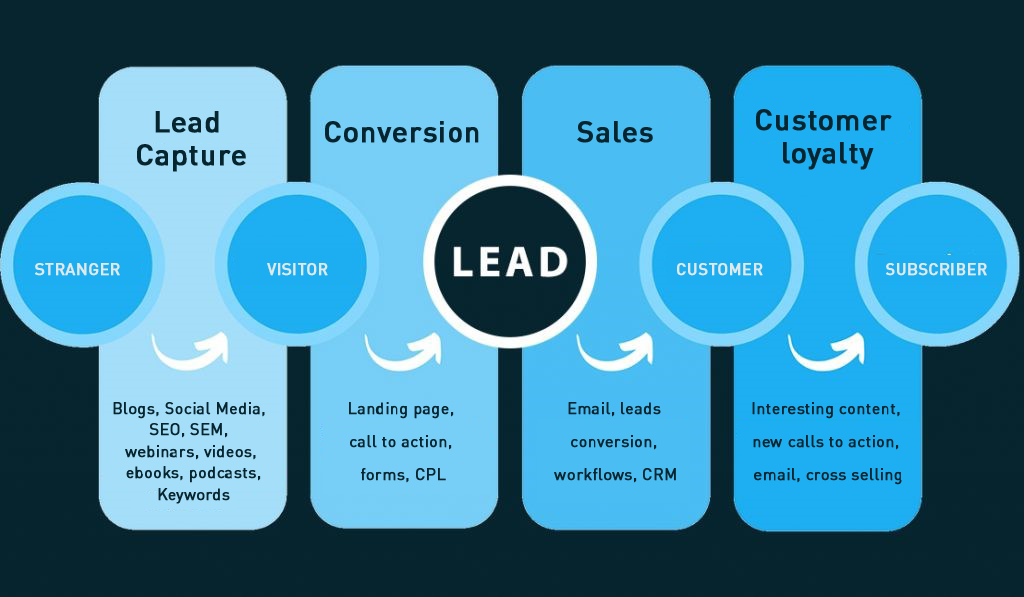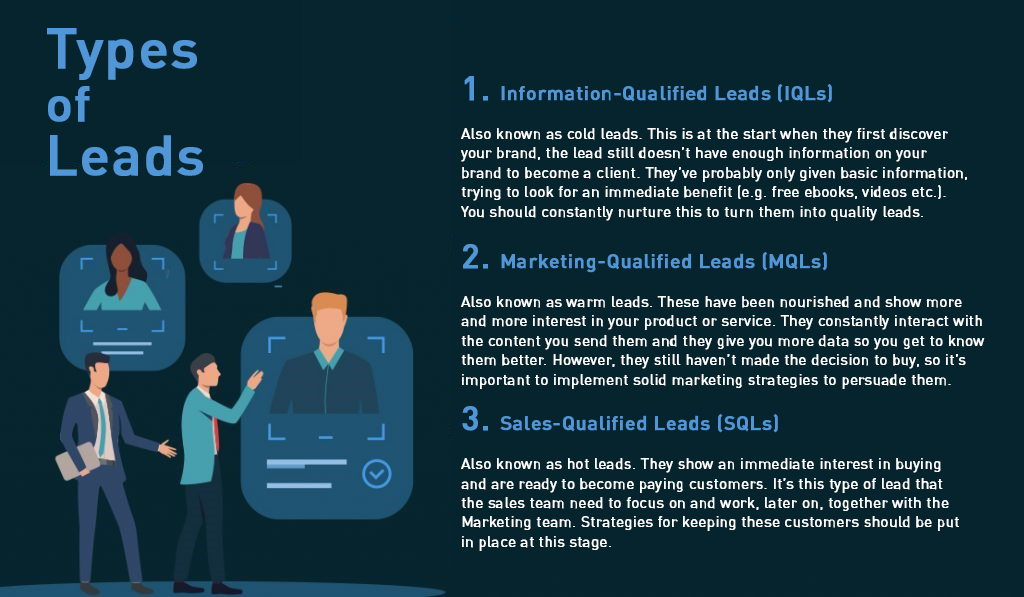 Glossary
Glossary
LEADS: DEFINITION, STAGES AND TYPES
What is a lead?
Generally, a lead is a person or organisation that shows interest in the content, products, services offered on your website. So, in order to gain something in return, visitors provide you with personal data so that you can contact them.
In doing this, you can maintain a close relationship with the people visiting your website. To what end? Apart from carrying out sales, you’ll also want to build loyalty. Turn random strangers on your website into actual customers. This is done through a lead.
There is no better sign that your conversion strategies are working than when visitors become leads on your website. In short, leads are potential customers – sales opportunities. That is, of course, if they are followed up correctly.
A lead depends on both your marketing and sales strategies. Once you have your leads, it’s essential that both strategies work hand in hand so that you don’t let them go.
Here are some examples of tools you can use at each stage of interaction with your clients, from the moment where they don’t know your brand up to the moment where they’re loyal customers.


As we said before, follow-ups are key, because even if a visitor on your website becomes a lead, that doesn’t mean they’ll immediately become customers.
For this, you should know exactly what type of lead you’re dealing with.



